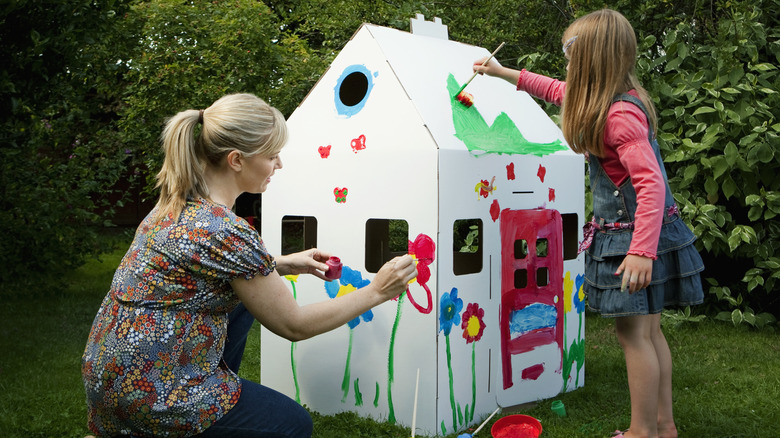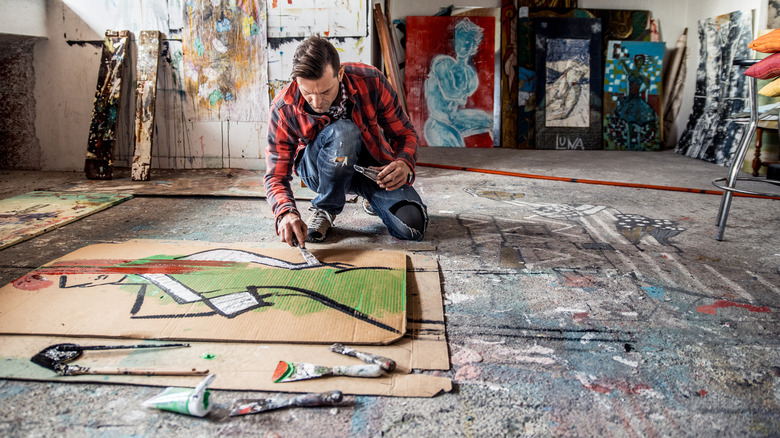The Best Kinds Of Paint For DIY Projects That Involve Cardboard
Painting can be a therapeutic activity, and you don't have to be Van Gogh or Kahlo to enjoy it. You also don't need a canvas. Many arts and crafts enthusiasts use walls, the floor, and various other media — like cardboard — for painting. Cardboard is a popular material used for DIY projects, but when it comes to changing its surface color with paint, it's important to choose the right kind. Tempera, acrylic, and spray paint are three of the best paints to use on cardboard. You may also want to coat the cardboard with primer first for the best results.
Can you use other types of paint? Technically, you can use any type of paint on cardboard, but you might not get the look you want if you simply choose whatever paint you have lying around. Plus, certain varieties, such as oil paint, cost more than others and are difficult to remove should you accidentally spill some on an unwanted surface. With acrylic, tempera, and spray paint, you can spend less money and make a great-looking cardboard craft without worrying about costs or a challenging cleanup process.
In addition to the paint of your choice (or paints, if you decide to use more than one kind), you'll need brushes that are made for tempera and acrylic. You'll also need a palette or similar item to pour your paints onto and for mixing. If you're worried about smears and splatter, you can avoid a big mess while painting by reusing an old bedsheet underneath the cardboard.
How to paint cardboard with acrylic, tempera, or spray paint
Before painting the cardboard, it's best to apply a priming paint like gesso to create a protective layer on the surface. This layer allows the color to adhere better and reduces paint absorption. Note that gesso primer typically comes in a shade of white, but you can also buy it in black, clear, or other colors. After this base coat completely dries, you can apply your acrylic, tempera, or spray paint.
Used on cardboard, these three paint types share a few similarities and differences. Acrylic paint is thick, so applying it in thin layers is best. You'll find that this paint goes on easily, dries quickly, and leaves a smooth, shiny finish. It's also water-resistant, which could be beneficial for a cardboard surface. Tempera is also fast-drying and easy to apply, but it leaves a matte finish. Spray paint is the most unique since it requires no brushes. However, because of the fumes, you should only use it in well-ventilated areas and wear a mask while spraying. You may also want to consider TikTok's time-saving tips to make spray painting your project a breeze.
Once all the painting is done, let the cardboard dry. The drying time depends on the paint you choose and how much of it you apply. If you don't want to risk touching or moving your project prematurely, let it sit overnight in a well-ventilated, dry environment. Ensuring complete dryness is crucial if you'll be repurposing a cardboard box for a pet or a young child.

